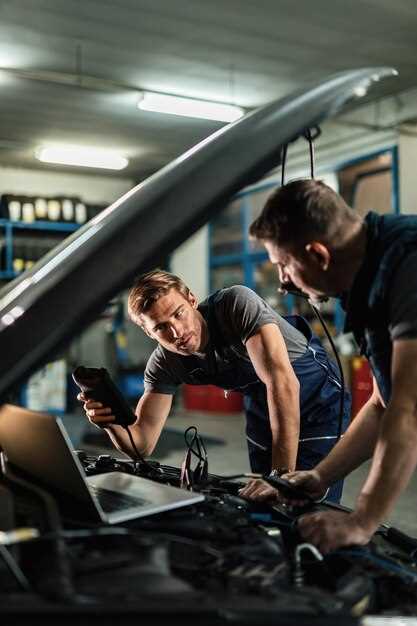How to Properly Align Your Car for Performance Driving


In the world of performance driving, every millisecond counts. Optimal vehicle alignment plays a crucial role in maximizing your car’s handling, stability, and tire longevity. Whether you are on a racetrack or navigating twisty roads, ensuring that your car is aligned correctly can mean the difference between a thrilling ride and a dangerous one.
Car alignment refers to the adjustment of the vehicle’s suspension components, ensuring that the wheels are set to the right angles relative to each other and the road. Proper alignment doesn’t just affect driving comfort; it significantly influences how your vehicle responds to steering inputs and corners. A well-aligned car will track straight and true, allowing for improved control and performance.
Understanding the various alignment settings–the camber, caster, and toe angles–is essential for performance enthusiasts. Camber affects how the tires make contact with the road during turns, caster influences the steering’s responsiveness, and toe ensures the wheels point in the right direction. Together, these factors contribute to a balanced and predictable driving experience.
In this article, we will delve into the critical aspects of car alignment for performance driving. We will explore how to measure alignment, the impact of adjustments on driving dynamics, and tips for maintaining optimal alignment over time. Whether you’re a seasoned racer or an avid weekend driver, achieving the perfect alignment is integral to unlocking your car’s full potential.
Understanding the Importance of Wheel Alignment in Performance
Wheel alignment plays a critical role in the overall performance of a vehicle, particularly in performance driving scenarios. Proper alignment ensures that all four wheels are positioned correctly relative to each other and to the road, which directly affects handling, tire wear, and overall stability.
In performance driving, precise handling is paramount. Incorrect alignment can lead to a vehicle that pulls to one side, causing the driver to constantly correct the steering. This can hinder the ability to navigate corners effectively and reduce confidence at high speeds. Proper alignment allows for greater control and responsiveness, enabling drivers to maximize their performance on the track or during spirited drives.
Tire longevity is another significant aspect influenced by wheel alignment. Misaligned wheels tend to wear tires unevenly, leading to costly replacements and potentially dangerous blowouts. By ensuring the wheels are aligned, drivers can extend tire life and maintain consistent grip, which is vital for performance-oriented applications.
Additionally, alignment affects the aerodynamics of a vehicle. A misalignment can create additional drag, reducing efficiency and negatively impacting acceleration and top speed. In competition settings, where every fraction of a second counts, maintaining optimal alignment can provide a competitive edge.
In summary, proper wheel alignment is essential for enhancing the performance of a vehicle. It ensures optimal handling, prolongs tire life, and contributes to aerodynamic efficiency. For those serious about performance driving, regular checks and adjustments should be a vital part of vehicle maintenance.
Identifying Signs of Misalignment in Your Vehicle
Detecting misalignment in your vehicle is crucial for maintaining optimal performance and safety on the road. Here are some key indicators that suggest your vehicle may be misaligned:
- Uneven Tire Wear: Inspect your tires regularly. If you notice that the tread is wearing more on one side than the other, it may be a sign of misalignment.
- Steering Wheel Off-Center: When driving straight, your steering wheel should be level. If it appears crooked or tilted, misalignment is likely present.
- Vehicle Pulling to One Side: If your car consistently veers to the left or right while driving on a straight road, this is a strong indicator of alignment issues.
- Vibrations in the Steering Wheel: Any unusual vibrations or shaking in the steering wheel, particularly at higher speeds, may signal misalignment.
- Unusual Noises: Listen for squeaking or grinding noises when turning, which could indicate issues with alignment or suspension components.
It’s important to address these signs promptly to avoid further damage to your vehicle and ensure a safe driving experience. Regular alignment checks can prevent these issues from becoming more severe.
Tools You Need for Measuring and Adjusting Alignment
Achieving optimal car alignment requires a set of specialized tools designed for precision measurement and adjustments. Here are the essential tools you will need:
-
Alignment Rack:
This is a specialized platform that holds the car in place during the alignment process. It often features built-in measurement systems that can display critical alignment angles.
-
Laser Alignment Tools:
These devices use laser beams to measure angles accurately. They help ensure that the wheels are aligned according to manufacturer specifications.
-
Camber Gauge:
A camber gauge measures the angle of the wheels relative to vertical. This tool is essential for determining positive or negative camber settings.
-
Toe Plates:
Toe plates are used to measure the toe angle of the wheels. They assist in achieving the right distance between the front edges of the tires versus the rear edges.
-
Turn Plates:
These plates allow the wheels to pivot smoothly when adjusting the alignment. They help measure caster angles while turning the steering wheel.
-
Adjustable Wrench and Sockets:
These hand tools are used to tighten or loosen suspension components during adjustments. Ensure you have various sizes for flexibility.
-
Digital Measuring Device:
A digital measuring tool can provide accurate readings of alignment angles, facilitating quick adjustments and ensuring precision.
-
Level:
A simple but effective tool, a level is used to ensure that various components of the vehicle are set up correctly before any measurements are taken.
-
Suspension Tools:
Specific tools designed for adjusting suspension components, such as impact wrenches or spring compressors, are crucial for making necessary changes efficiently.
Using the right tools is vital for achieving precise alignment, enhancing vehicle performance, and improving driving safety. Always ensure that your tools are calibrated and maintained for the best results.
Step-by-Step Guide to Aligning Your Car’s Wheels
Proper wheel alignment is crucial for maintaining optimal vehicle performance, ensuring tire longevity, and enhancing driving safety. Follow this step-by-step guide to align your car’s wheels effectively.
Step 1: Gather Necessary Tools
Before you begin, gather the necessary tools: a tape measure, alignment tools or a protractor, wrenches, and possibly a jack and jack stands. Ensure you have a flat, level surface to work on.
Step 2: Inspect Your Tires
Check your tires for uneven wear patterns, which can indicate alignment issues. Make sure all tires are properly inflated according to the manufacturer’s specifications.
Step 3: Measure the Current Alignment
Use a tape measure to measure the distance between the front and rear of the tires on the same axle. This is known as the ‘toe’ alignment. Make similar measurements on the other axle for comparison.
Step 4: Check Camber and Caster Angles
Camber refers to the tilt of the wheels. Use angled tools to measure this angle for each wheel. Caster refers to the angle of the steering pivot. Ensure both are within manufacturer specifications.
Step 5: Adjust Toe Settings
Adjust the tie rods to correct the toe settings. If the front of the tires is closer together than the rear, it indicates ‘toe-in’; if further apart, it’s ‘toe-out’. Adjust until the desired toe measurement is achieved.
Step 6: Adjust Camber Settings
If the camber angle is off, adjust the strut mounts or use camber bolts to bring it within the specified range. Ensure both sides are equal to maintain even tire wear.
Step 7: Adjust Caster Settings
While caster adjustments are often limited and may require specialist tools or professional alignment equipment, ensure your settings match manufacturer recommendations. Adjust if needed, typically by changing the front suspension geometry.
Step 8: Double-Check Measurements
After making adjustments, measure all angles again to ensure they meet the required specifications. Consistency is key for optimal performance and safety.
Step 9: Test Drive Your Vehicle
After completing the alignment, take your car for a test drive in a safe area. Pay attention to how the vehicle handles, any vibrations, or pulling to one side.
Step 10: Recheck Alignment After Driving
After the test drive, recheck all measurements to ensure everything remains within spec. Minor shifts can occur after initial adjustments.
By following these steps, you can achieve precise wheel alignment, enhancing your vehicle’s performance and safety for an enjoyable driving experience.
Maintaining Alignment for Optimal Performance Over Time
To achieve and sustain optimal performance in your vehicle, regular maintenance of wheel alignment is essential. Misalignment can lead to uneven tire wear, decreased fuel efficiency, and compromised handling. Understanding the key factors influencing alignment and implementing a consistent maintenance routine can contribute significantly to your car’s performance longevity.
Regular inspections are crucial, ideally every 6,000 to 10,000 miles, or whenever you notice changes in handling or tread wear. During these inspections, mechanics can identify misaligned wheels and make necessary adjustments. An annual alignment service is also recommended, especially after encountering potholes or curbs that can disrupt alignment settings.
Environmental factors play a significant role in maintaining alignment. Sudden temperature changes can affect suspension components, leading to misalignment. Additionally, road conditions and driving habits can introduce wear to steering and suspension parts, which may require frequent adjustments.
| Signs of Misalignment | Recommended Actions |
|---|---|
| Uneven tire wear | Schedule an alignment check immediately. |
| Vehicle pulls to one side | Have alignment and tire pressure evaluated. |
| Vibration in the steering wheel | Inspect alignment and balance of wheels. |
| Steering wheel off-center | Adjust alignment settings to factory specifications. |
Investing in quality tires and suspension components can enhance the longevity of alignment settings. Tires with a higher tread life and advanced materials provide better performance and stability. Regularly rotating tires can also help ensure even wear and prolong their lifecycle.
Ultimately, maintaining proper wheel alignment fosters improved handling, safety, and fuel efficiency, allowing drivers to experience the full performance potential of their vehicles over time.
When to Seek Professional Help for Alignment Issues

Identifying alignment issues early can prevent further damage to your vehicle and enhance performance, but knowing when to seek professional assistance is crucial. If you notice uneven tire wear, such as bald spots or excessive wear on one side, it’s a clear indication that your alignment may be off. Additionally, if your vehicle pulls to one side while driving, or if the steering wheel is off-center when driving straight, these symptoms should not be ignored.
More subtle signs, like vibrations in the steering wheel or a feeling of instability during high-speed driving, can also signal alignment problems. If your vehicle is difficult to control or performs poorly in cornering, it’s time to consult a professional. Furthermore, after any significant impact, such as hitting a pothole or being involved in a minor accident, it’s wise to have the alignment checked, even if no immediate issues are apparent.
Professional alignment services utilize specialized equipment and expertise to accurately diagnose and correct alignment problems. If you’re unsure about the signs or lack the tools to assess your vehicle’s alignment, don’t hesitate to take your car to a certified mechanic. Regular maintenance checks can help you stay ahead of potential issues, ensuring a safer and more enjoyable driving experience.
